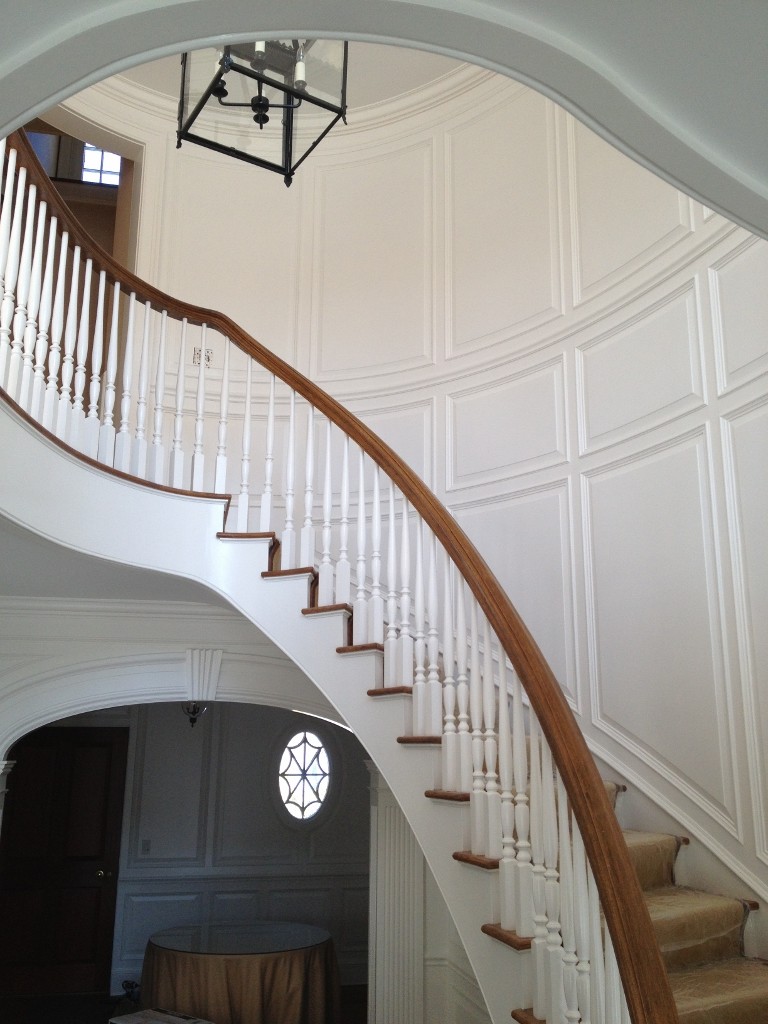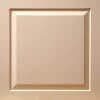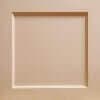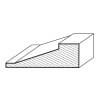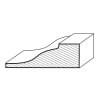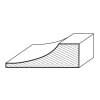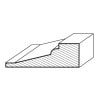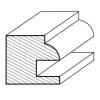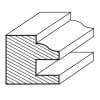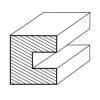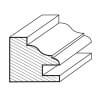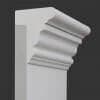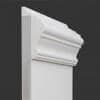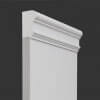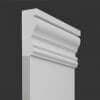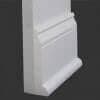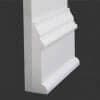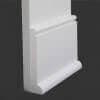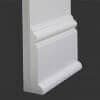Wainscoting is a kind of wall molding that is made out of wood panels and is installed at the bottom section of a wall. Wainscoting, in contrast to crown molding, which is used to mark the transition between walls and ceilings, covers a third of the wall from the bottom. Most range in height from 32″ to 40″ (though it is possible to adapt the wainscoting’s height to suit your personal preference and needs).
Wainscoting can add so much character to a room, and it’s one of the primary reasons for its continued popularity. This is despite the fact that it was originally introduced to the world centuries ago. If you are considering adding a component like this to your home, familiarizing yourself with the primary types of wainscoting will help you choose the one that is best suited to your tastes and the aesthetic of your house. Today, let’s talk about the 5 main types of wainscoting and the best materials to work with.
Types of Wainscoting to Choose From
Wainscoting can be categorized into five primary styles, each of which has its own set of defining qualities.
Raised-Panel
Raised panel wainscoting is the traditional form of wainscoting, and it’s common in homes that have a Colonial architectural style. It is built with interior panels that lie flat against a wall, as well as for trim panels that have been beveled by a skilled craftsman like Wainscot Solutions so that they protrude outward. The finished product is a wall that gives the impression that it has sunken inwards, but in reality, the wall’s external panels have been lifted to achieve such an illusion.
Flat-Panel
In contrast to raised panel wainscoting, a flat panel is a type of wainscoting that has an internal panel that is aligned with external trim panels in order to produce a level and uniform surface.
Flat-panel wainscoting may be installed by the homeowner, unlike raised panel wainscoting, as it involves the least amount of work. Installing wainscoting with flat panels typically doesn’t require any expert woodworking, beveling, or carpentry skills.
Wall-Panel
In contrast to the majority of styles or types of wainscoting including raised panel wainscoting, this one makes use of the wall itself as the interior paneling rather than superimposing or overlaying another panel on top of it.
This style is similar to raised panel wainscoting with the exception that it’s much easier for a homeowner to DIY than raised panel wainscoting. With wall-panel wainscoting, there is typically a difference in the depth between external trim panels and the wall.
Overlay
Flat wainscoting and raised panel wainscoting are both components of the overlay wainscoting. Instead of one, it has two interior panels. For the first, a flat panel is used, then it is joined with a second panel that is somewhat smaller than the first panel in order to produce an elaborate, layered appearance. Neoclassical architecture and interior design often make use of this design element.
Board and Batten
Board and batten wainscoting is a style that covers seams where boards connect with a thin and narrow board known as the batten. The boards in a board and batten wainscoting are wider and positioned vertically side-by-side. Even though it was originally designed for use as exterior siding, today this style’s appeal is adored in interiors that have a farmhouse, rustic, and cottage-core character to them.
Best Materials for Wainscoting
Although custom-made wainscoting in CT is traditionally constructed from wood panels, it is becoming increasingly common to find variants made from materials other than wood.
Vinyl
Because it is easier to clean and the material is more resistant to water and scratches than hardwood or ply panel options for wainscoting, vinyl is a favorite among homeowners for use in areas that are subjected to a high volume of foot traffic and moisture, such as kitchens, baths, and mudrooms.
It costs approximately USD$1-2 per linear foot, which is significantly less in comparison to the typical cost of USD$5 per linear foot for real wood paneling.
Medium Density Fiberboard
Medium-density fiberboard is a wood-like option, and it’s close to the real thing. But, it is a more cost-effective option and comes with a number of benefits. It is created from a combination of wood chips, sawdust, and plant fibers, and provides additional insulation against sound or noise and extreme temperatures. It, however, has downsides: it is weaker and a lot easier to damage in comparison to real wood. This wainscoting material will cost you somewhere in the range of USD$2-4 per linear foot.
Custom-Made Wainscoting in CT
Most kinds of custom-made wainscoting in CT needs intervention from professionals with expert woodworking skills and extensive knowledge.
It’s advised to trust a wainscoting project to professional craftsmen like Wainscot Solutions as we can help you save half of the expense and effort by doing it right the first time. At Wainscot Solutions, you are offered quality, bespoke wainscoting designs and paneling plus you’ll have access to the most gorgeous veneers and timbers. To find out more, call us today!
